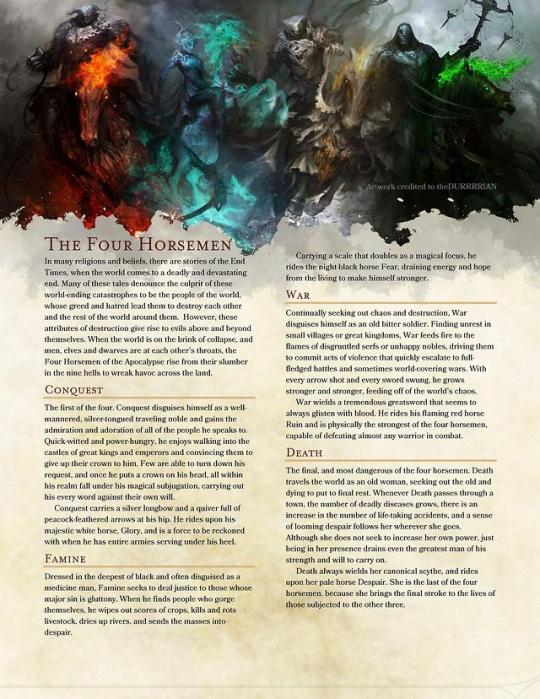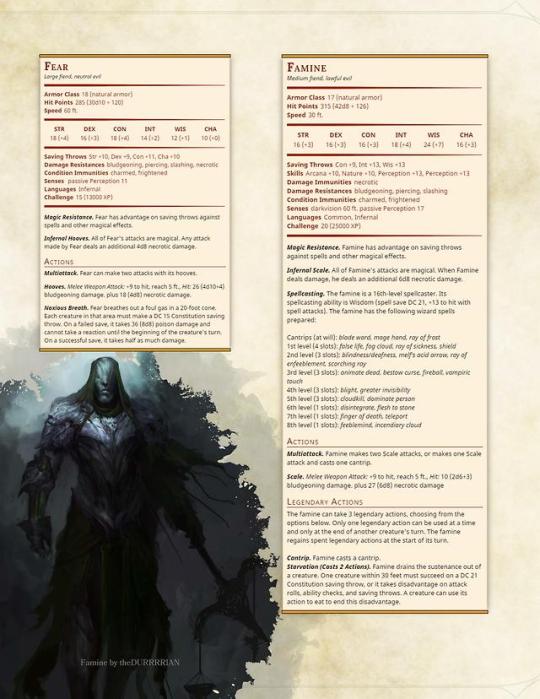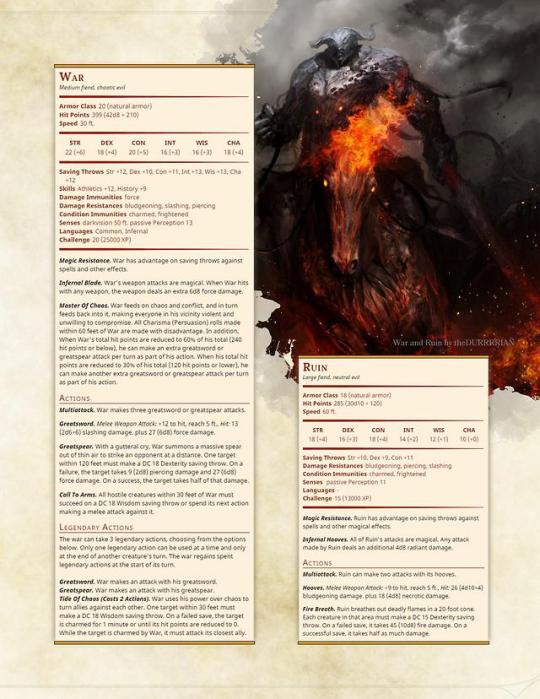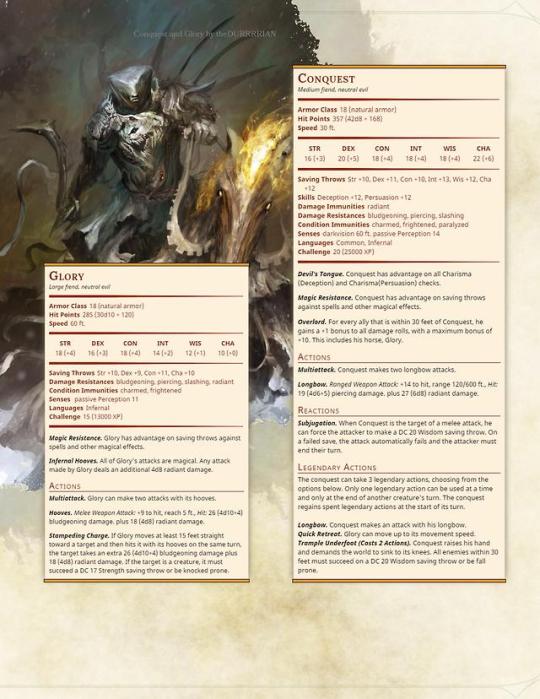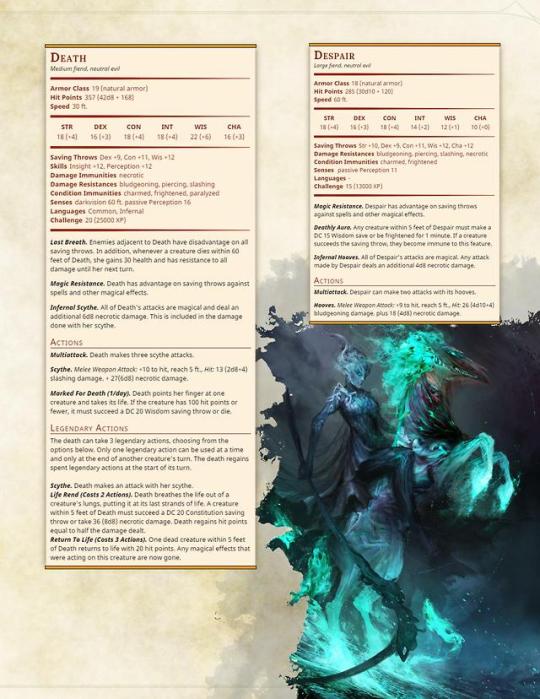Text
Hotlinks to all Tables: A complete list of every trinket table for quicker access compared to scrolling through the entire blog or sifting through the archive. This also functions as the easiest link to reblog or save for reference purposes as it’s updated with each new table. Now with 76 full d100 loot tables.
—Note: The links sometimes don’t work on mobile devices or some apps. Try using a desktop or browser extensions if they aren’t working.
-Minor Magical Items: Semi useful magical objects (If not always useful to an adventurer) that have little to no drawbacks associated with their use and are perfect for low level characters.
-Minor Magic Items, 1 / -Minor Magic Items, 2
-Minor Magic Items, 3
-Unique Weapons: Blades, bludgeons and bows of all shapes, sizes and mysterious backgrounds. Distinctive weapons that can serve as the basis for family heirlooms, legendary artifacts and magical or masterwork weapons.
-Unique Weapons, 1 / -Unique Weapons, 2
-Unique Weapons, 3 / -Unique Weapons, 4
-Unique Weapons, 5 / -Unique Weapons, 6
-Unique Weapons, 7
-Masterwork Weapon Bonuses: Over 20 homebrew weapon improvements, enhancements and modifications created though superior craftsmanship. These masterpieces though more powerful than ordinary weapons would not be considered “magic” or “+1” weapons. Compatible with Pathfinder, D&D 5e and other D20 systems.
-Wild Magic Surges: A collection of Wild Surge options for DMs and PCs who find the published tables limiting, repetitive or boring, three things wild magic by definition, should never be.
-Sealed Glass Vials: Faulty potions, weak elixirs, alchemical supplies, spell components, ritual elements, enchanting materials, crafting ingredients and magically preserved biological samples.
-Sealed Glass Vials, 1 / -Sealed Glass Vials, 2
-Sealed Glass Vials, 3 / -Sealed Glass Vials, 4
-Sealed Glass Vials, 5 / -Sealed Glass Vials, 6
-Sealed Glass Vials, 7 / -Sealed Glass Vials, 8
-Books: An eclectic library of dusty tomes, fictional textbooks, pocketbooks, paperbacks, hardcovers, booklets, leaflets and magical manuals.
-Trinkets, Books, 1 / -Trinkets, Books, 2
-Trinkets, Books, 3 / -Trinkets, Books, 4
-Trinkets, Books, 5
-Book Descriptions: A short list of quirks, physical descriptions and eccentricities to add additional personal characteristics to the book trinket list.
-Trinkets, Rings: Enough rings and bands to wear three on every finger and toe while still having dozens to spare. These small circular pieces of gems, metal, wood or bone always add more to the story than the sum of their parts.
-Trinkets, Rings, 1 / -Trinkets, Rings, 2
Trinkets, Necklaces: Pendants, amulets, lockets, chokers and other “Neck Slot” jewelry that grant an immediate glance into the bearer’s personality, wealth, rank or social class and often serves as an iconic part of that character’s look. While a locked metal torque can instantly mark the bearer a penniless slave and a string of lustrous pearls mark their owner a flauntingly wealthy noble, so can an adventurer’s necklace mark them as a creature to bestow quests upon.
-Trinkets, Necklaces, 1 / -Trinkets, Necklaces, 2
Trinkets, Priceless: Artifacts, artist masterpieces, rare magics and opulent combinations of jewels and precious metals. These objects can be found in the throne rooms of kings, the demiplanes of archmages and the pinnacle of a dragon’s hoard.
-Trinkets, Priceless, 1
-Trinkets, Valuable: More useful than regular trinkets, these items have either a clear purpose, a reliable ability or are made from a fairly costly material.
-Trinkets, Valuable, 1 / -Trinkets, Valuable, 2
-Trinkets, Valuable, 3 / -Trinkets, Valuable, 4
-Trinkets, Valuable, 5 / -Trinkets, Valuable, 6
-Trinkets, Valuable, 7 / -Trinkets, Valuable, 8
-Trinkets: Interesting baubles or semi magical items that have little to no practical in game or mechanical use for an adventurer.
-Trinkets, First
-Trinkets, 1 / -Trinkets, 2 / -Trinkets, 3
-Trinkets, 4 / -Trinkets, 5 / -Trinkets, 6
-Trinkets, 7 / -Trinkets, 8 / -Trinkets, 9
-Trinkets, 10 / -Trinkets, 11 / -Trinkets, 12
-Trinkets, 13 / -Trinkets, 14 / -Trinkets, 15
-Trinkets, 16 / -Trinkets, 17 / -Trinkets, 18
-Trinkets, 19 / -Trinkets, 20 / -Trinkets, 21
-Trinkets, 22 / -Trinkets, 23 / -Trinkets, 24
-Trinkets, 25 / -Trinkets, 26 / -Trinkets, 27
-Trinkets, 28 / -Trinkets, 29 / -Trinkets, 30
-Trinkets, Worthless: Vaguely interesting garbage, vendor trash and junk loot. Not magical or mysterious like regular trinkets or worth anything more than a copper piece or two even if you could find someone to buy it in the first place.
-Trinkets, Worthless, 1 / -Trinkets, Worthless, 2
-Trinkets, Worthless, 3 / -Trinkets, Worthless, 4
-Trinkets, Worthless, 5 / -Trinkets, Worthless, 6
-Trinkets, Worthless, 7 / -Trinkets, Worthless, 8
-Trinkets, Worthless, 9
-Mottos: Whether they’re called adages, maxims or creeds, these simple statements are essentially promises made to oneself, family, or institution. A character’s motto can be a goal in itself or a moral anchor that centers his life and guides his action. A mixed collection of real life and fictional mottos that can aid a DM to quickly expand the history of the campaign or to aid a PC in a richer character creation.
-Mottos, 1 / -Mottos, 2 / -Mottos, 3
-Mottos, 4 / -Mottos, 5 / -Mottos, 6
-Mottos, 7 / -Mottos, 8 / -Mottos, 9
-Battle Cries: Simplistic and bone chilling warcries, complex and inspiring calls to arms and primal wordless screams of rage that shakes the enemy down to their iron-shod boots. A collection of simple phrases, threats, insults and violent promises for creatures to yell before and during combat to add verbal spice to each attack.
-Battle Cries, 1 / -Battle Cries, 2 / -Battle Cries, 3
-Battle Cries, 4 / -Battle Cries, 5 / -Battle Cries, 6
-Battle Cries, 7
-All Reference Tables: When a trinket calls for a Random Weapon, Random Color or Random Godly Domain and you can’t think of one offhand, just go here and either roll a die or select one of your own choosing.
—Keep reading for all reference tables.
Keep reading
19K notes
·
View notes
Text
Risky Jump
Context: I am fairly new to D&D, and I jumped right into DMing a Hoard of the Dragon Queen campaign for 6 players, the ones in this story being the Aasimir Fighter (a Hollow Knight who we just call Knight because he doesn’t speak) and a Human Barbarian named Rolo Torstenson
It was the beginning of the campaign and the party had just made it to the top of the keep in Greenest, a town currently under attack by a dragon, all the players are still level one and they are about to fight this Dragon from the top of the keep. The dragon had come fairly close to the keep which we determined to be 40 feet up.
Knight (ooc): So how far away is the dragon?
DM: 20 feet from the wall and about 5 feet higher than where you are standing
Knight (ooc again): What about his tail?
DM: *kind of seeing where this is going* I guess because of the size of the Dragon, it is level with where you are standing, same distance away
Knight (ooc): I’m going to jump for the tail *Starts running*
DM: The dragon is 20 feet away, you are going to have to roll an unnatural 20 to make that jump and even if you do, I am going to punish you.
Knight (ooc): I know *proceeds to fail the throw and start falling*
We took a break to quickly determine the height of the wall and how much damage he would take upon falling. Anither thing to note is at the bottom of the keep are a ton of Kobolds and Cultists who were raiding the village.
Knight (ooc): are we doing the Mario rule? (If you land on a creature, it takes the fall damage)
DM: Sure, but just because I still dont think you are going to survive.
Knight: *Proceeds to fail the dex save and takes 4d6 damage, almost knocking him unconscious*
Knight (ooc again): I still have my second wind! *quickly uses that to heal himself to near full only to be swarmed by Kobolds and get knocked unconscious*
Rolo: I’m going to go save him *jumps down and gets knocked out from the fall alone*
DM: What are you even doing…
TL:DR: The mute Knight in the campaign tried to jump 20 feet onto a dragon in flight and failed, fell 40 feet, tried to land on a Kobold, failed that too, almost died, healed himself, got instantly knocked out by the Kobolds, the Barbarian jumps to save him and gets knocked out from the fall… During battle… With a dragon… At level one… *facepalm*
481 notes
·
View notes
Photo
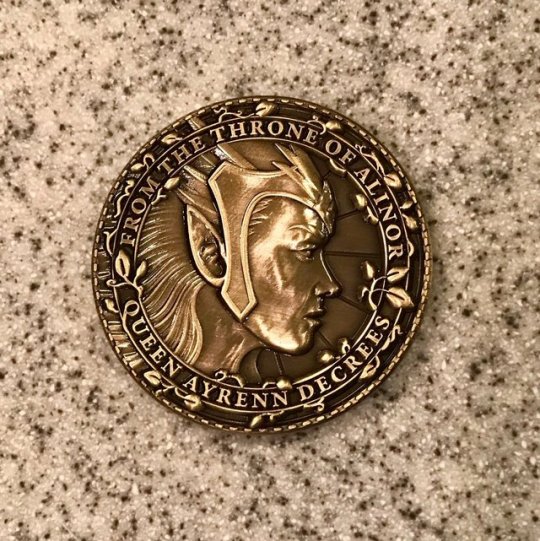
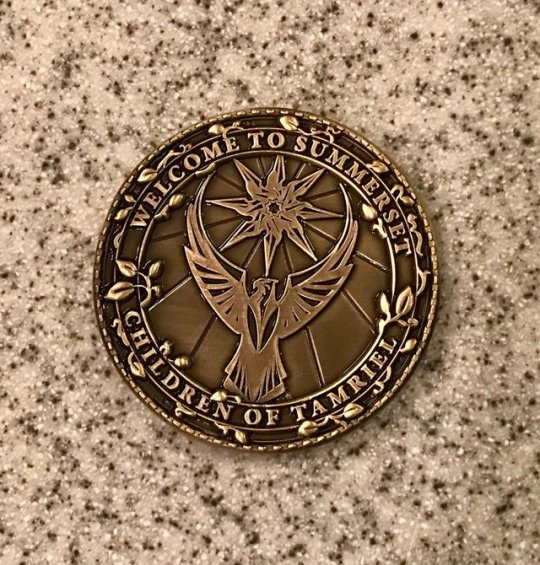
Today is the 23rd birthday of the UESP! Yes really, 23 years now. The UESP is three years older than Google, six years older than Wikipedia, and is eleven years older than Tumblr. To celebrate, we’re giving away one of our collectible TES coins. To enter for a chance to win, just reblog this post. A winner will be chosen in one day. Good luck!
1K notes
·
View notes
Text
Random Weapon Tables: Sometimes you just need a weapon and literally anything mildly lethal will do the trick. These lists give a DM the ability to quickly look through different options when generating loot or as a paired resource when an trinket from another table asks you to “Roll a Random Weapon”. These weapons are separated by type then arranged with the more exotic, uncommon or impractical weapons at the higher results, allowing you to roll a d12 or lower dice to find weapons your party can actually use. If you use a system that doesn’t have specific statistics for the listed weapon, feel free to reroll or to just copy the statistics of a similar weapon in your system. For example: A machete, cutlass, gladius, falchion, saber or dao can all be given shortsword statistics easily (And vice versa), while still making it special and unique for your player. For a truly Random Weapon, roll a d4 to select the table, then roll on that table.
-1, One Handed Melee Weapons:
Club
Dagger
Handaxe
Shortspear
Shortsword
Mace
Longsword
Warhammer
Morningstar
Flail
Pair of Spiked Gauntlets / Spiked Cestus,
Brass Knuckles
Rapier
Scimitar
Light Pick
Spiked Shield
Whip
Sickle
Sap
Weighted Net
-2, Two Handed Melee Weapons:
Quarterstaff
Longspear
Greatclub
Pike
Greatsword
Maul / Greathammer
Heavy Mace
Greataxe
Heavy Flail
Halberd
Glaive
Bastard Sword
Trident
Lance
Heavy Pick
Katana
Garrote
Spiked Chain
War Scythe
Fullblade
-3, Ammunition and Thrown Weapons: I recommend giving out 5-30 units of ammunition depending on how much you like your players.
Bullet
Bolt
Arrow
War Dart
Throwing Knife
Javelin
Throwing Axe
Bola
Throwing Hammer
Shuriken / Throwing Stars
Harpoon and Rope
Chakram
-4, Projectile Ranged Weapons: I know there’s 13, please don’t judge me.
Blowgun
Sling
Shortbow
Longbow
Composite Bow
Hand Crossbow
Light Crossbow
Heavy Crossbow
Stonebow: A simple crossbow that’s essentially a well engineered slingshot, it fires rounded bullets with the statistics of a light crossbow. This weapon is favored as a hunting implement by peasants to kill small game such as rabbits and birds. These kills often use cheap and easy to make baked clay pellets, which can accurately hit small birds in flight without obliterating the corpse as a crossbow bolt or large arrow might. The weapon can be adjusted to launch nearly any type of small rounded object such as sling bullets, smooth stones or metal shot but cannot fire crossbow bolts.
Flask Launcher: A modified crossbow that fires vials, flasks, small bottles and potions with the statistics of a light crossbow. Objects launched in this fashion can typically travel much farther and more accurately than a wielder could throw them. The weapon can be adjusted to launch nearly any type of small bottle type receptacle but cannot fire crossbow bolts.
Wrist Launcher: A slim tube designed to be concealed beneath the sleeve by strapping to one’s forearm. It allows the wielder to fire a dart with a twist of the wrist. The launcher functions by means of a tightly compressed spring, and must be reloaded and re-cocked with a separate ramrod which takes an entire round. The device weighs one pound without ammunition and takes two rounds to first put on. It has an effective range of 20 feet
Wrist Launcher, Heavy: A slender tube designed to be concealed beneath the sleeve by strapping to one’s forearm. It allows the wielder to fire a crossbow bolt with a twist of the wrist. The launcher functions by means of a tightly compressed spring, and must be reloaded and re-cocked with a separate ramrod which takes an entire round. The launcher functions by means of a tightly compressed spring, and must be reloaded and re-cocked with a separate ramrod which takes an entire round. The device weighs two pounds without ammunition and takes two rounds to first put on. It has an effective range of 20 feet
Net Launcher. A modified heavy crossbow that can fire a weighted net twice as far as it’s normal effective range. It cannot fire crossbow bolts.
608 notes
·
View notes
Photo
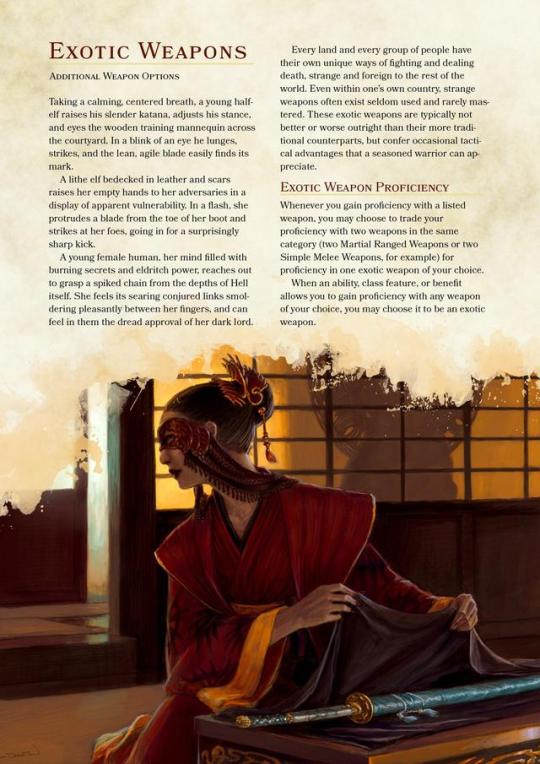
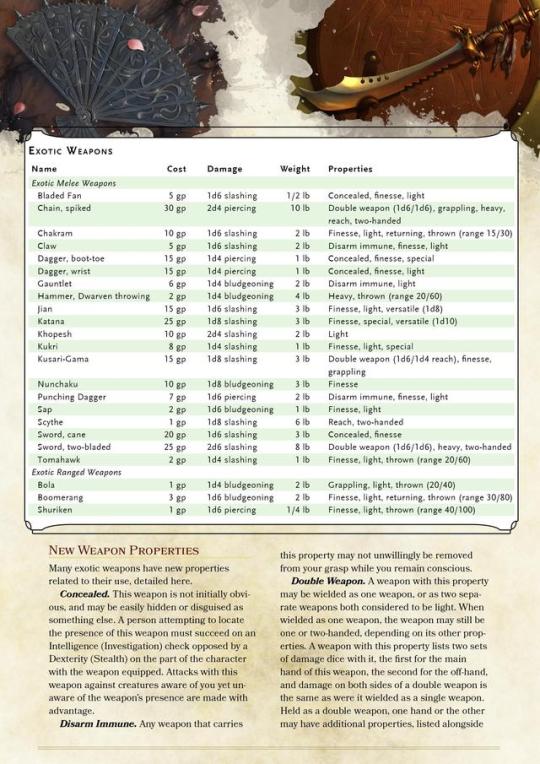

Exotic Weapons rules for D&D 5e, homebrew by the_singular_anyone / reddit
6K notes
·
View notes
Photo


Critical Hits Revisited by coolgamertagbro / Sterling Vermin
3K notes
·
View notes
Text
Unique Weapons, 3: Blades, bludgeons and bows of all shapes, sizes and mysterious backgrounds. Heroes and villains across fiction can often be immediately recognized by their signature weapon, causing the weapon itself to be an iconic part of the character. From Perrin’s spiked half moon axe to Roland’s enormous sandalwood revolvers, the jedi’s lightsabers, Arya’s needle, Legolas’s bow, Wolfwood’s Punisher, Detritus’s Piecemaker, the bride’s katana, Bond’s Walther PPK, Robin Hood’s longbow, Jason’s machete or Indiana Jones’s whip, a weapon can even function as a physical manifestation of the character’s personality. None of these weapons are intensely magical in their own right but can serve as the physical basis for family heirlooms, legendary artifacts and magical or masterwork weapons. Alternatively they can be found as loot and become part of a PC’s distinctive appearance, allowing the player to become fully immersed in their character’s look and feel. —Note: Some entries call for the DM to “Roll a Random Weapon” which simply means that the DM can roll from the pregenerated lists on this blog or choose whatever weapon they feel would be appropriate for the situation.
A huge, bloodstained jawbone of an unknown creature that’s assuredly been used for acts of violence. The club has dozens of notches on the bone which almost certainly denote the number of creatures the makeshift weapon was used to kill.
A padded messenger bag containing a half dozen fairly inconspicuous looking dinner plates. The dishes are made of a light metal alloy and their edges are decorated with blue webbing and a seedling rice plant. Upon close inspection the edges of the plates are actual razor sharp along the entire rim except for a hand sized area where the plants cross creating a “Zn” pattern. The objects are perfectly weighted for throwing (Chakram statistics) and make a distinctive whistling sound while hurtling through the air.
A collapsible steel baton that can be used as a club. The weapon can be compacted into a foot long metal cylinder and can be extended with a flick of the wrist. The baton is twice as heavy as a normal club but the bearer gains advantage on checks made to conceal it on their person.
A heavy, two handed pickaxe consisting of a bone shaft, topped with a pair of jagged claws as sharp and durable as steel that are bound to the bone with sinew. The weapon radiates a faint aura of ruthlessness and evil intentions. Knowledgeable PC’s will discover that all parts of the weapon originated from a singular demon.
A brightly polished steel shortsword whose pommel is decorated with delicate green vines and beautiful flowers. If the wielder ever uses the weapon to kill a member of their own race, the weapon’s appearance changes drastically when the wielder next sleeps. After they awake, they will find that the blade’s once shining metal has darkened to a matte black with blood red veins running through it. The vines have mutated into thick cords of virulent purple, covered in wicked barbed thorns. The weapon’s dark change is only apparent to that wielder (And by extension any others who have used it to murder another of their own species), who is never again able to see the weapon as it was before.
Roll a Random Weapon: A humble looking weapon that was once passingly glanced at by a minor God of War. When grasped, the wielder is filled with a thirst for violent conflict and armed battle for no other reason than to prove which side is stronger. Despite the extremely limited exposure to the God’s general presence, the weapon still tingles with residual divine magic and can serve as a focus for offensive spells (Those that cause direct damage or others subject to DM approval) cast by a true adherent of a God of War.
A sickly pale, leather pouch containing a dozen, granite sling bullets carved from tombstones.
A one-handed mace made entirely of bluish steel, with a handle wrapped in white dragonhide. The weapon is completely covered in a fine layer of perpetually frost.
A greyish-green greatsword with a serrated edge on both sides of its blade and a hilt made of a soft, white substance wrapped around a solid core. The white spongy flesh of the hilt has a heartbeat-like pulse that never matches its wielder’s and is fantastically unnerving to hold.
Featherweight Darts, Silver: A small wooden case containing a dozen extremely small, lightweight darts. These fragile darts have barbed needle-like heads made of silver which are too small to deal damage on their own. When a dart hits exposed skin, the thin shaft breaks off, leaving the base of the fine barbed head flush with the flesh and nearly impossible to spot. These darts are specialty weapons used against lycanthropes, devils and some undead as the victim typically doesn’t have the time and composure to find and remove the barbed head with tweezers or a needle. The silver head embedded in the victim’s flesh and acts as a toxin and when combined with other similar darts and silver weapons, can weaken the creature enough to kill. The barb can be removed without issue in one round with proper equipment and a successful medicine check or by quickly cutting out the barb dealing 1d2 damage. The small darts are meant to be used in both blowguns and wrist launchers but can be thrown by hand or fired from a hand crossbow while suffering disadvantage on the attack roll. —Note: The suggested damage for an embedded dart in a creature weak to silver is 1 per minute (At the end of each minute) until it is removed. Otherwise the embedded silver could hamper spellcasting, supernatural abilities, lower the victim’s damage resistance or lower the amount of hit points they receive from healing. This effect would be compounded with each additional embedded barb and it is ultimately up to the DM to determine exactly how to implement this weapon.
-Click Here for homebrew Masterwork Weapon Bonuses to give these objects even more personality and mechanical benefits.
-Or keep reading for 90 more weapons.
Keep reading
170 notes
·
View notes
Text
Malakes everywhere
Possible spoilers for AC: Oddysey
So I bought Assassin's Creed Odyssey. Main reasons are that you have a boat like in Black Flag and that it's set in Greece. There are not many who would decline an opportunity to play a game set in the most famous era of your country. Even if it is heavily fictionalized and made to accommodate everyone.
So I bought the game and installed it. Starting up the game you are taken to Thermopylai and you take the role of Leonidas, albeit briefly. You kill a lot of Persians and what looks like one of their captains before you start in the modern world again. There you are going into the Animus and need to choose a male or female character. Usually I play male stereotypes but there was something about this female character that I liked. So I picked her, Kassandra, and waited for the game to start.
Ans I must say I wasn't disappointed. You start off in Kephallonia and are confronted by two thugs. After an altercation where your character proclaims them as malakes you need to make a decision, spare them or kill them. I am trying to turn a new leaf in my life so I spared them. Then you wear your armor which consists of leather strings mostly and are left to explore.
I must say I was sceptical but a great job has been done. The dialogue is in English but the actors have Greek accents which gives an authenticity to the game. The surroundings are very well made and have a Greek feeling to them. From the houses to the ambient dialogue. But what made me chuckle the most is the heavy use of the world malaka.
For those who don't know it the Greek world malaka has a different meaning depending on who uses it or how it is meant. The literal meaning is "The one who masturbates." It had an origin from ancient Greece which makes you think a lot about your ancestors. In any case in Oddyssey it is used in abundance. It takes the role of the modern curses that would not be appropriate in any setting set thousands of years ago and it kinda works. After the ten times I heard it I am expecting it in every situation. But I digress, let's go back to the game.
So the game is very beautifully designed and made. The graphics are exceptional and the scenery really gives a feeling of vibrancy. Even if some things are definitely out of place the whole game has a Greek feeling. I would definitely suggest it to everyone who is a fan of open world, role playing games. For those who know the game has definite mechanics of the Assassin's Creed saga but it can be seen as more. There is no Assasin seen anywhere yet and that for me is good. It is set before the creation of the order after all.
And the best part, besides the malakes misthious? I am at 12 hours logged and the percent completed says 2%.
0 notes
Photo





ALRIGHT. I DID IT, IT’S DONE.
I’ve been ill for about a week (again) and I’ve been trying to work on this during that time. I’ve been wanting to do a class not solely focused on combat for quite some time, and this was supposed to my first go at it. I wanted to make something that was more of a support player in the group, kinda enabling the rest of the party instead of they themselves being a direct contributor. Since there isn’t a lot out there that isn’t supposed to focus on combat efficacy, I wasn’t really sure how I should go about trying to achieve my goal with the content. In the end this is what I came up with, but I’ll admit I phoned it in a bit since I’ve been feeling so crummy. I need to sit down and really crunch the numbers on what the gold requirements and percentages of various abilities should be, but until then feel free to alter them if the need arises and something proves too broken/not broken enough.
As always questions and comments are welcome. I’d love to hear your thoughts. (Content PDF)
2K notes
·
View notes
Text
Make sure the system you use matches the kind of players you have, for an optimal experience
Admin Note: This is part of the ongoing series called “D&D isn’t the only TTRPG if you don’t want fantasy play another goddamn game!���
60K notes
·
View notes
Text
Sealed Glass Vials, 5: A sealed, four ounce, clear glass vial containing a suspicious liquid, powder, slime or gas, that no true adventurer would hesitate to loot. They contain anything from eye of newt, toe of frog, faulty potions, weak elixirs, alchemical supplies, spell components, ritual elements, enchanting materials and crafting ingredients. These can be found in mage towers, voodoo shacks, potion shops, enchanter’s workshops, witch’s hovels, alchemist’s pocket’s, wizard’s pouches and anywhere and everywhere a small vial could be stored. The DM can roll a d4 to determine what state the vials are found in, or choose one of the following based on how much you like your players: 1, The vial’s is incorrectly labeled. The DM invents something at random or roll again and the vial is labeled that result. 2, The vial has no label of any sort. 3, The vial’s label is correct but only in a general sense. For example, a vial of powdered unicorn horn could be labeled “Horn” or “Unicorn”. 4, The vial has a clear and accurate label describing exactly what it contains.
A sealed glass vial filled with a Randomly Coloured liquid. If consumed, the drinker’s skin changes color to match the liquid and glows with the intensity of a candle. All both effects wear off harmlessly after one hour.
A sealed glass vial filled with magically preserved powdered mandrake root.
A sealed glass vial containing a few drops of pure magic. They glow constantly in an array of Random Colours and shine brightly when held by a creature capable of casting magical spells.
A sealed glass vial filled with magically preserved wildflower pollen.
A sealed glass vial containing a magically preserved humanoid eyeball that’s been tattooed with the holy symbol of a god of a Random Evil Domain. It’s impossible to determine if the tattoo was done before or after the eye was removed.
A sealed glass vial filled with finely ground ocean pearls.
A sealed glass vial filled with a Randomly Coloured liquid. If consumed, the drinker is unable to refer to themselves in the first person (Me, myself and I) for 24 hours.
A sealed glass vial filled with powdered jasper.
A sealed glass vial filled with a Randomly Coloured liquid. If consumed, the drinker screams uncontrollably for the next minute.
A sealed glass vial filled with a Randomly Coloured liquid. If consumed, the drinker’s eyes become invisible for the next 1d4 hours. This does not affect his ability to see.
—Keep reading for 90 more sealed glass vials.
Keep reading
174 notes
·
View notes
Text

More often than not I’ll crack into a sprawling fantasy series and, while I appreciate the luscious descriptions of furniture, landscapes, and clothing, all I’m focused on is that I don’t actually know how this world works. I only know what it looks like.
Including some functionality to your universe can add to immersion and give your reader a strong foundation on which to build their mental model of your universe.
You certainly don’t need to use all of these questions! In fact, I recommend against that, as all of these certainly won’t make it into your final draft. I personally find that starting my worldbuilding off with 5 to 10 functional questions helps pave the way for glittery and elaborate aesthetic development later on.

How is the healthcare funded in your world?
How does healthcare functionally differ between the wealthy and the poor? (i.e. can only the wealthy go to hospitals? do poor families often have to rely on back-alley procedures?)
Where are health centers (i.e. hospitals, small clinics, etc.) organized in your cities?
Does it differ in smaller towns?
How does this affect people’s ability to get healthcare?
Is healthcare magical, and if it is, how does that affect the healthcare system?
If healing is instantaneous, how does that affect people’s views on injury, illness, and chronic ailments?
If you have both magical and physical healthcare, which one is deemed superior and how does that affect society?
What illnesses are common in your world?
How does this affect daily life?
What do the people in your world think illnesses are?
Is it a miasma theory?
Humor theory?
Demons?
Do they know about biological viruses and bacteria?
How does this affect healthcare?

How do people get water?
Is the water sanitary and if not, how do they sanitize it?
How does agriculture work?
Is it large corporations or individual farms?
What sort of agricultural technology exists in your world and how does it affect food production?
Are farmers wealthy or poor?
What sort of natural resources does your world/country(ies) have and how are they obtained?
How does this affect the average wealth of the country?
How does this wealth affect the culture?
What livestock or beasts of burden are most valued? Least valued? Why?
What is considered a luxury good vs. a regular good?

What forms of transportation does your world have?
What classes use what forms of transportation?
How far has the average citizen traveled, given your transportation limitations?
Which cities are the most accessible and which are the least? Why?
How do popular transportation methods change how cities/towns are laid out?
Does your world have public transportation? What is it?
Is there a coming-of-age aspect to travel?
Describe your world’s postal system or whatever equivalent there is.
Who pays for it?
How reliable is it?
Are there emergency methods for transporting information?

How does your world keep time (i.e. watches, sundials, water clock, etc.)?
Does your world have a currency system, barter system, or something else?
If you have multiple countries, do different currencies have different values across said countries?
How does this affect travel?
Do you have banks in your world and if so, how are they run?
Who owns the banks? Government? Wealthy? How does this affect the economy and/or class system?
How does credit operate in your universe?
Does your world operate more on big corporations or small business? Something in between?
How are workers/labourers treated in your world?
Are there workers unions and if so, what are common views on unions?
Describe your tax system. If you don’t have a tax system, explain why and how your world is affected by that.
Can certain social classes not own property, certain livestock, certain businesses, etc.? Why?
How are business records kept? Are business records kept?
If your world has technology, does your world prioritize developing entertainment tech, communications tech, transportation tech or something else entirely?
What does this say about your world?
How does this affect your economy?

To the closest approximation, what type of government does your world have?
How are rulers/presidents/nobles put in place?
How much power does an individual ruler have?
Is there a veto process?
If you have multiple countries, do they have different types of rulers?
Describe any large-scale alliances (i.e. countries, factions, etc.) that are present in your world.
How did they come about and how are they maintained?
Are they strained or peaceful?
How does it affect the greater politics of your world?
Describe how wars are fought both internationally and nationally.
Do methods of war differ between countries/races?
What about philosophies about war?
If there is a military, what is its hierarchy structure?
How does the military recruit?
Is the military looked upon favourably in your society?
What weapons are used by each country/type of people during warfare, and how does that affect war strategies?
Describe the sentencing system of your world.
Is your accused innocent until proven guilty, or guilty until proven innocent?
How are lawbreakers punished?
If you have prisons, describe how they are organized and run, and who owns them.
Does differing ownership change how the prisons operate?
What are the major ways in which laws between countries vary?
Do laws between cities vary? If so, how and why?
How does citizenship work in your world? What rights and privileges do citizens have that others do not?
Can certain classes or races not become citizens?
Are there certain taboo subjects or opinions that artist/authors/musicians are not allowed to depict (i.e. portraying the official religion in a negative light, explicit sexual material, etc.)? What does this say about your society?
How do people get around these censorship laws?
What is the official hierarchy of duty in your world? (i.e. is family the most important, or patriotism? What about clan?)
How many languages are there in your world, and how many languages share a common origin?
How many people are multilingual?
Which language is the most common?
How is multilingualism viewed?
How are different languages viewed? (i.e. is one language ugly/barbaric while another is romantic and sensual?)
Feel free to add your own questions in reblogs or in comments!
62K notes
·
View notes
Photo

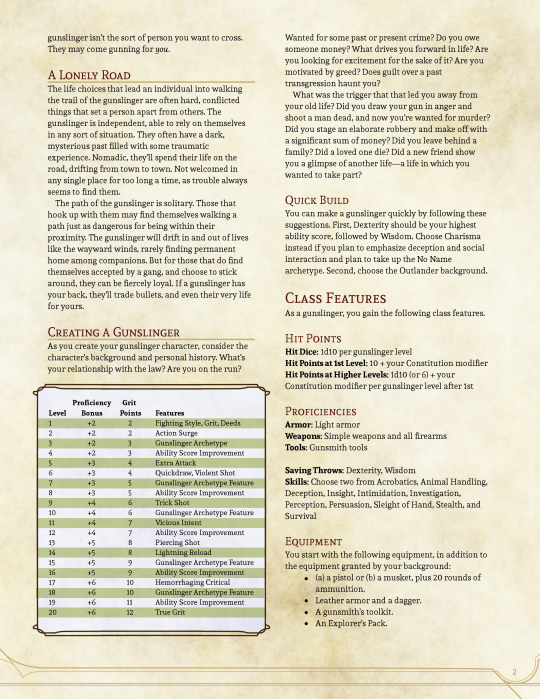



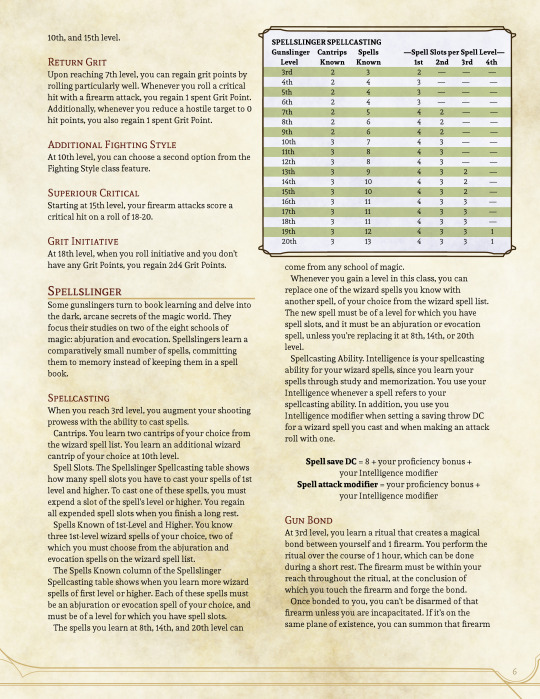


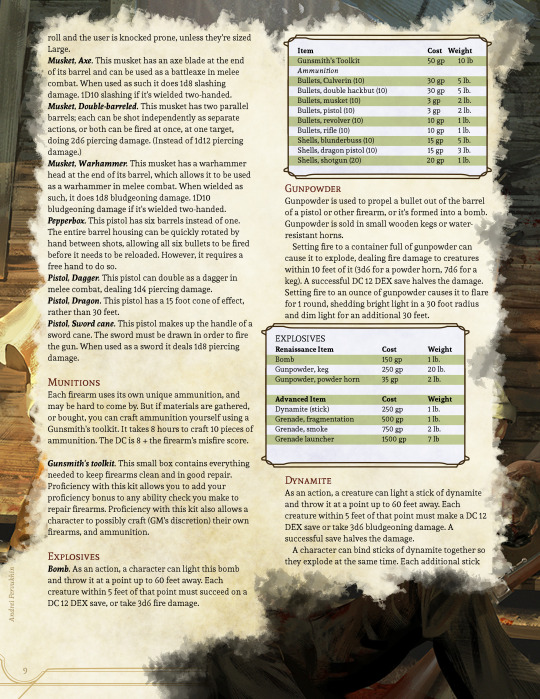

A homebrew Gunslinger class for Dungeons&Dragons 5E.
3K notes
·
View notes
Photo




Technology Domain Cleric by the_singular_anyone
1K notes
·
View notes
Photo

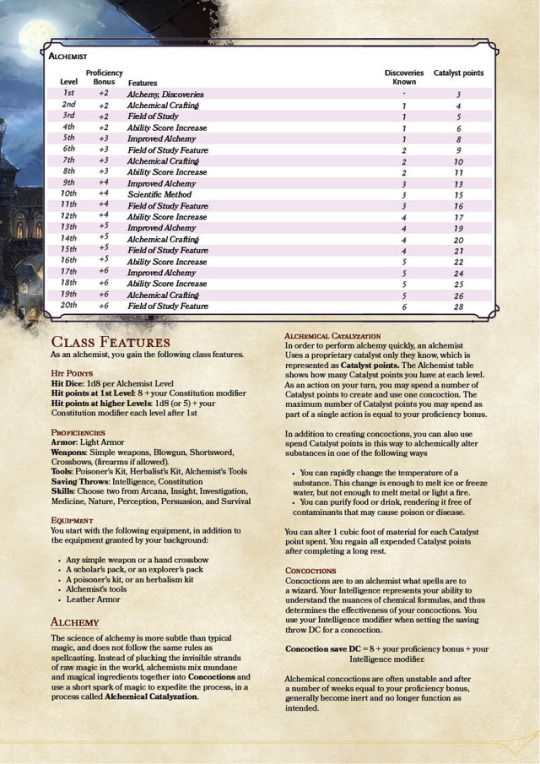
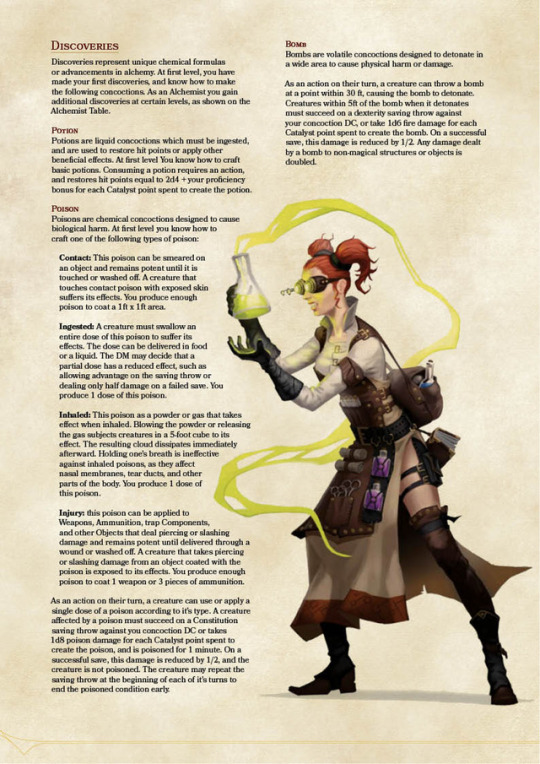

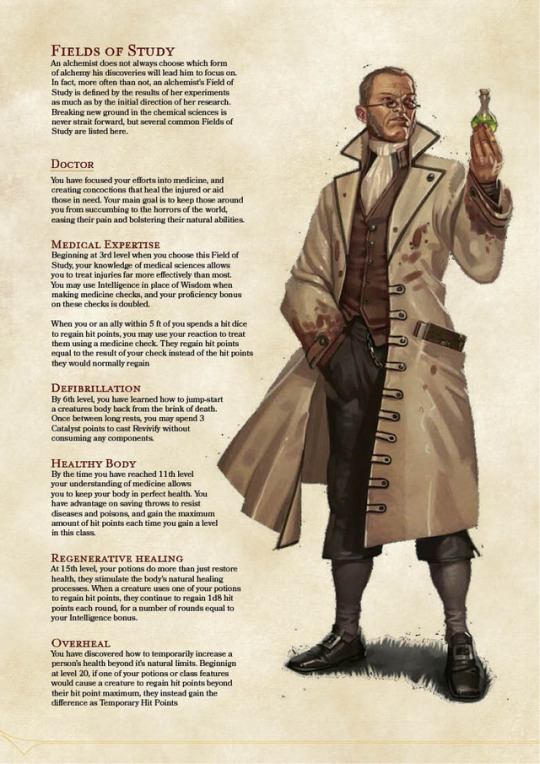

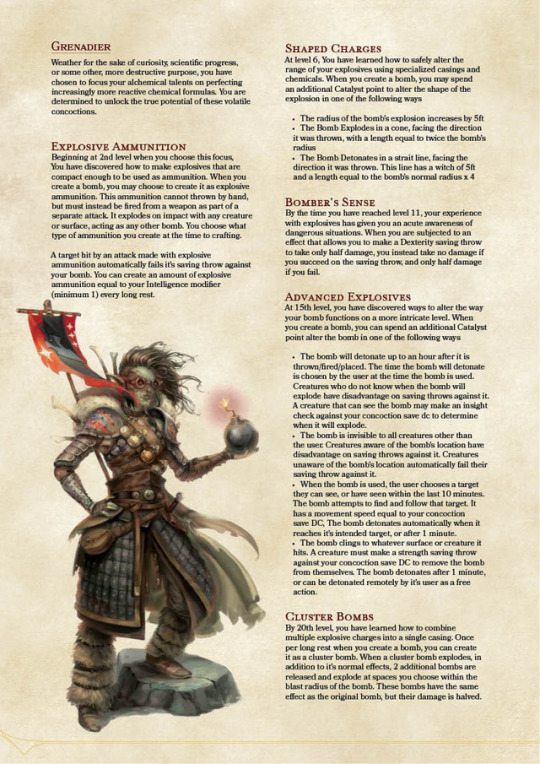

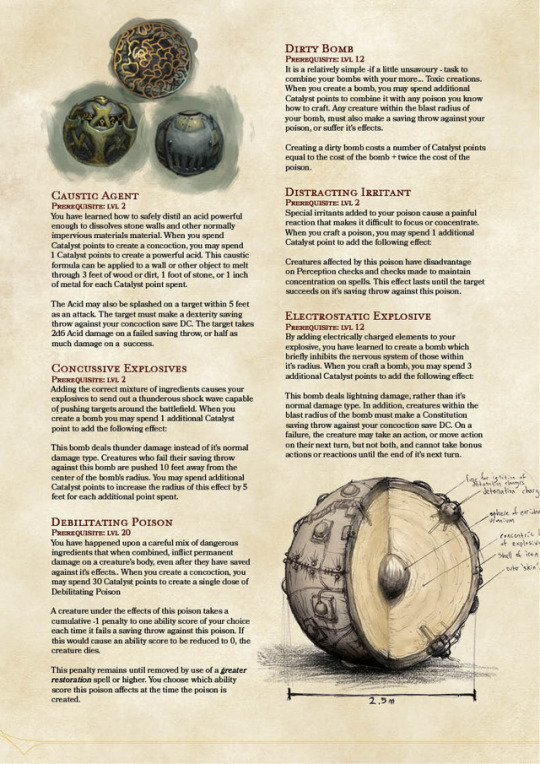

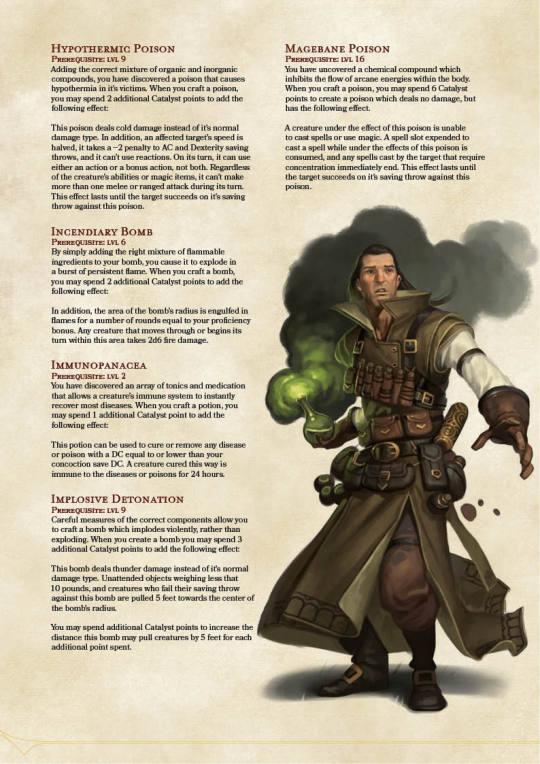


Clockwork Alchemist
Just Finished up My Alchemist Class! I have to give a Huge thank you to https://bloodshot9001.tumblr.com/, Who was gracious enough to let me work whit him on this one. We each have our own “final” version of this class, and his is available here
I should probably clarify that this is not my FMA style Alchemist class. For anyone desperately hanging on the edge of their seat waiting for that, I’m sorry to say that the time hasn’t come quite yet. That project is still in the works under the working title of the “alchemancer” (pm me if you can think of something better), but has been put on the back-burner while I focus on paid work. This Alchemist is based around crafting unique concoctions including potions, poisons, and bombs. It is designed to be a “Spell-less” alchemist, in response to the seeming overabundance of “Potion wizards” that seem to be so common.
There’s still some playtesting to do on this one, but it should be ready to go for the most part.
As always, My classes are available for free via this handy dropbox link. If you like what I do and want to support me, Check out my Patreon or Ko-Fi pages, or just come say hi on my Discord!
2K notes
·
View notes
Text
Capstone Abilities
You finally did it. You reached level 20. And as a reward for reaching the highest possible level in your class, you get the insanely powerful ability of casting two level 3 spells once without expending a spell slot
Wait what? Most level 20 abilities are pretty underwhelming if you ask me. So I came up with some alternatives!
(disclaimer I never played a level 20 character. And yes I am aware that there is maybe a bit too much relating cheating death and critical hits)
Keep reading
239 notes
·
View notes
